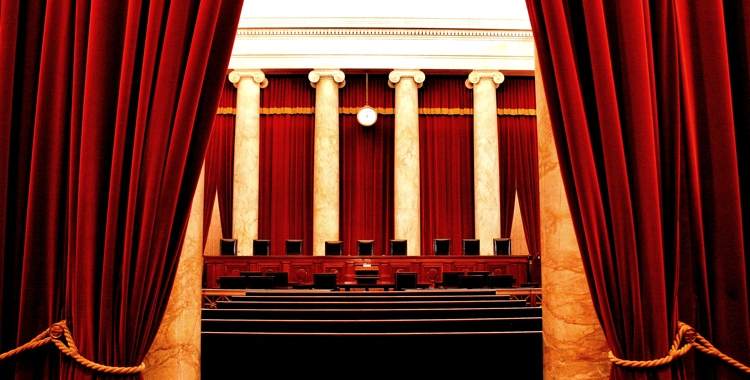
Mormon Leader: A Curtain, Not a Wall, between Church and State
Chelsea Langston
Mutual respect between people who differ, and a “curtain,” not a wall, between government and religious institutions were the prescriptions for social harmony proposed by LDS Church Elder Dallin H. Oaks in an October 20, 2015, speech. In sharp contrast, Rev. Barry Lynn of Americans United for Separation of Church and State continues to push to exclude religion from the public square.
Elder Oaks addressed the Second Annual Sacramento Court/Clergy Conference on “The Boundary Between Church and State.” He said,
“My thesis is that we all want to live together in happiness, harmony, and peace. To achieve that common goal, and for all contending parties to achieve their most important personal goals, we must learn and practice mutual respect for others whose beliefs, values, and behaviors differ from our own.”
Mutual respect requires that people and institutions of faith and those that are secular acknowledge that others are different, without engaging in culture wars.
And it requires respect for religious institutions and also for government. Oaks urged those opposed to religious organizations to “recognize the reality—borne out by experience—that religious principles and teachings and their organizations are here to stay.” And he urged religious organizations to not look upon the government as an enemy, but as a potential ally and protector. Religious organizations, he said, “can help create the conditions in which public laws and government institutions and their citizens can flourish.” For that, there needs to be a proper relationship between church and state.
Often that relationship is described as a “wall of separation,” but Elder Oaks proposed an alternative picture: “The more appropriate metaphor to express that relation—reinforced by government decisions of the Supreme Court—is a curtain that defines boundaries but is not a barrier to the passage of light and love and mutual support from one side to another.” Such a curtain, Oaks suggested, creates the space for a “fairness for all” approach when freedoms seemingly clash.
He used as his example the championing earlier this year by the Mormon church of state legislation in Utah that bans discrimination on the basis of sexual orientation and gender identity in housing and employment while creating robust religious freedom protections for faith-based organizations. The legislation advances both LGBT and religious rights, an outcome unlikely if such decisions are made by judges rather than legislators.
Just a week later, a quite different approach was proposed yet again by Barry Lynn of Americans United for the Separation of Church and State. Appearing on the Diane Rehm talk show on October 28, 2015, Lynn pushed his view that faith-informed conduct and perspectives, by individuals and by organizations, should be banned from the public square. Neutrality and fairness for all, in Lynn’s view, requires a tall and thick wall between church and state.
A caller challenged this view: “I kindly want to confront this notion of neutrality in the public square because it seems to require a compromise from every belief system except secular humanism.” The caller quoted Yale Professor Steven Carter, who has written, “Efforts to craft a public square from which religious conversation is absent, no matter how thoughtfully worked out, will in the end always say to those of organized religion that they alone, unlike everyone else, must enter the public dialogue only after leaving behind that part of themselves that they consider the most vital.”
All Lynn could say in response was that he could accept minimal intrusions of religion into public life: it is okay for the Bible to be discussed in an English class if this is necessary to understand something Shakespeare wrote, but there shouldn’t be “a whole class” about religion. But religion, of course, is not such a minimal factor in the lives of many people and organizations. They are shaped by faith; they should not be required to try to strip away this most important source of guidance when they enter into the public square and interact with others.
Elder Oaks, in his speech, had said that “religious faith . . . is the key to human dignity.” Many disagree, of course. Indeed, as he noted, “In recent years, our society has increased its recognition that many look on race and gender, including sexual orientation, as the basis of their human dignity.” Thus, our society has at least two different concepts of human dignity. One response has been to place “freedom from discrimination on these [new bases of human dignity] above the constitutional guarantee of free exercise of religion”—marginalizing religion. Better is to do what Utah did, safeguarding both concepts of dignity by protecting religion as well as LGBT rights.
Ironically, if Barry Lynn’s view had been the rule, in Utah the Mormon church would have been excluded from the public square and would not have been able to advance a legislative program that promoted LGBT rights even as it secured religious rights.
